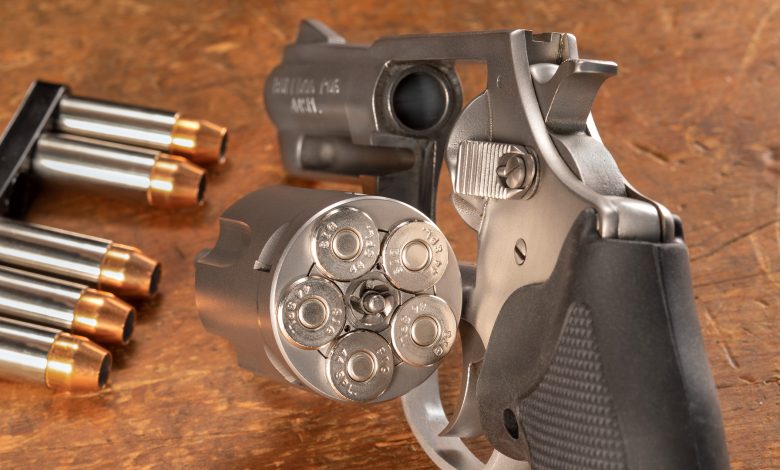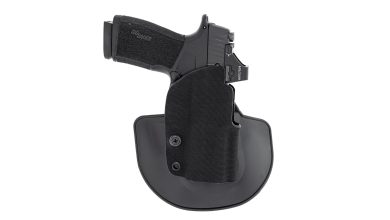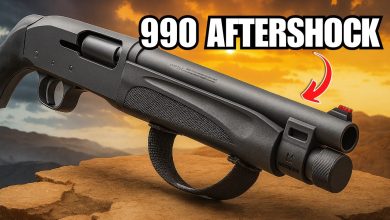Handguns: Massive Bore

Big-bore carry guns are trending larger now, although Charter Arms’ compact Bulldog remains in production.
I’m at a point in my long association with firearms where I don’t have a favorite type of handgun or a favorite cartridge anymore. I’d like to say that it’s because I’m jaded and sophisticated and generally too cool for such things, but the reality of the matter is I just like too many of them to pick just one.
But, if there’s one combo that still has a special place in my heart, it’s a smallish revolver chambered for big-bore cartridges, mostly five-shot snubbies in .44 Spl. I’ve written of my history with them on these pages before, but that was some years ago and there have been new developments since. It’s worthwhile to go back and look at the technical shortcomings with these guns and how some of these newer offerings might address them.
As a quick recap, my association started back in the early 1990s with a Charter Arms Bulldog Pug, and over the years I’ve owned a variety of the breed, from the utilitarian Rossi 720 Covert to the exotic, humpbacked Smith & Wesson 296Ti Centennial AirLite.
In full retrospect, these revolvers had, generally, several built-in caveats, and the cartridges developed for them had several more.
Being up front, these were not “small-frame” revolvers. In something like a Smith & Wesson J-frame, designed around a six-shot .32-caliber cylinder, there just wasn’t enough room for five, .44 Spl. charge holes.
The wheelguns in question range in size from the classic Charter Arms Bulldog on the small end—which is sized roughly comparable to the old, but loved D-frame Colt (Detective Special)—and K-frame Smith & Wesson Model 10, to the discontinued Smith & Wesson 696 and Taurus 445 .44 Spl., which are both essentially on the beefier, L-frame-size revolver.
While the classic defensive loads in .44 Spl., like the Winchester Silvertip and Federal LSWC-HP, weigh in at 200 grains, a lot of plinking ammo in the chambering was loaded with 246-grain lead round nose or 240-grain jacketed softpoints.
As a poor gun store clerk, when I took my Bulldog Pug or Rossi 720 to the range, more often than not it was using PMC 240-grain JSP ammunition, as it was the cheapest .44 Spl. ammo widely available at the time. However, while not any sort of overpressure loads, in those small-frame guns it was putting serious stresses in them.
The Charter was made under the tenure of one of the previous owners of that brand and it was during a period when the company was not known for its quality control. Not only did I wind up on my hands and knees at least once a range trip looking for the thumb piece of the cylinder-release latch and making a mental note to Loctite the dang thing when I got home (which I never remembered to do), but in a distressingly short period of time, the gun also developed a distressing amount of end shake and the matte electroless nickel was flaking off the topstrap.
The Rossi had issues with that diet, too. This was an early ’90s-production 720 Covert, which means it had a bobbed hammer and fixed sights. Its frame was as small as that of the Bulldog, so about K-frame size-ish. Furthermore, I have to say that the fit on my copy was as good as any inexpensive revolver I’ve owned—maybe too good. The barrel-cylinder gap was tight enough that as the cylinder heated up and a little fouling built up, the cylinder would seize.
This happened quicker with hotter, heavier loads like the aforementioned PMC 240 grain. In actual use it would have been a non-issue, since most gunfights don’t involve firing 50 rounds in the span of 15 or 20 minutes.
For some revolvers, those bullet weight limits are even less theoretical. Smith & Wesson’s five-shot AirLite .44 Spl. guns—like the Model 296, with its aluminum-alloy frame and titanium cylinder—had a maximum bullet weight of 200 grains laser-engraved right on the barrel shroud. This wasn’t for any reason of structural weakness or the like, but because these revolvers were so lightweight that heavier projectiles, especially ones lacking a copper jacket, would turn them into kinetic bullet pullers; after two or three shots, the remaining cartridges in the cylinder would disassemble themselves due to the abrupt violence of the recoil impulse. (Taurus’ Total Titanium revolvers were less aggressive about recommending maximum grain weights, but strongly counseled against unjacketed, lightly crimped ammo for the above reasons. Still, the laws of physics work the same in Brazil as they do in the U.S., so lighter bullets were less likely to cause problems.)
The problem this led to is that all the .44 Spl. defensive loads were being designed with these revolvers in mind, and therefore rather light-for-caliber. Like the Winchester Silvertip and Federal LSWC-HP, the Speer Gold Dot hollowpoint in .44 Spl. weighed in at 200 grains. When Hornady released a version of its Critical Defense for the chambering, it incorporated a 165-grain FTX Flex-Tip hollowpoint.
Already at a speed disadvantage owing to the short barrels of these snubby big-bores, the low-pressure .44 Spl. loads generated only moderate muzzle velocities. Expansion was iffy through any barrier more challenging than a T-shirt, although this wasn’t necessarily bad, since if the projectile did expand, penetration was marginal. Federal’s more recent 180-grain Punch load is an improvement, but doesn’t have much of a track record yet, being only a few years old.
Taurus’ now-discontinued medium-frame big-bore snubbies pointed to the way out of this dilemma, however. Since they had meatier frames than the older Bulldog and Rossi 720, Taurus offered its Model 450 in .45 Colt and the Model 415 in .41 Mag. Especially with the .41 version, this offered the possibility of loads that had enough sectional density and velocity to deliver both expansion and penetration.
This new frontier for the small revolver with a big bore lay dormant and not fully explored for several years. It wasn’t until 9 years ago that Smith & Wesson took it to its logical conclusion. Its L-frame, .44 Spl.-chambered wheelguns had obviously been dimensionally capable of handling .44 Mag. ammo. With the Model 69 Combat Magnum, Smith & Wesson made it official, with a cylinder deliberately reamed for .44 Mag. and heat treated to handle the pressures.
While a five-shot L-frame wouldn’t be your first choice for going hunting for brown bear, a concealed-carry revolver capable of handling magnum loads could be reassuring to have in those parts of the country where a flat tire on a back road might mean you aren’t at the top of the food chain.
Read the full article here







